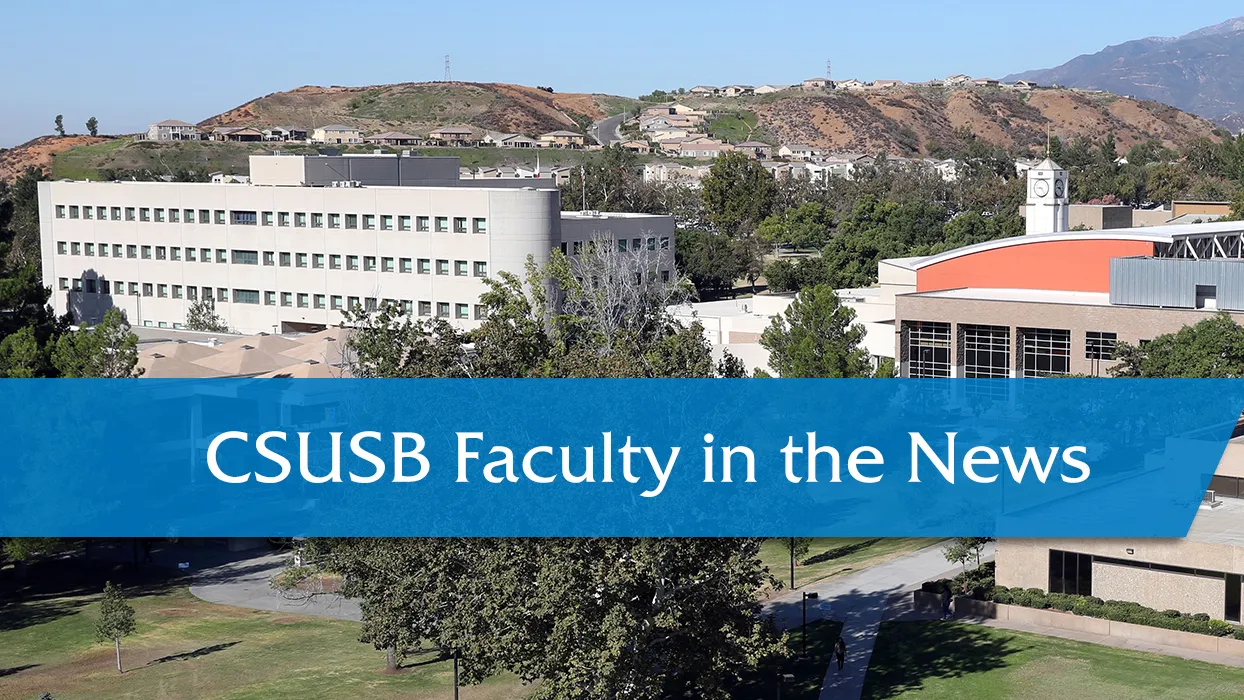NOTE: Faculty, if you are interviewed and quoted by news media, or if your work has been cited, and you have an online link to the article or video, please let us know. Contact us at news@csusb.edu.
CSUSB professor among experts interviewed about white supremacist group Rise Above MovementThe Orange County Register/Southern California News GroupOct. 4, 2018While the arrests of four men linked to a white supremacist group who allegedly participated in the violence in Charlottesville, Va., in August 2017 was seen as encouraging, there are other worrying factors as the nation approaches the mid-term elections, said Brian Levin, director of the Center for the Study of Hate and Extremism at Cal State San Bernardino. He was one of the experts interviewed for the article. Levin encountered R.A.M members during an anti-Sharia Law rally in San Bernardino last year. “They were in my face asking if I was Jewish and shoving dollar bills in my face,” he said. “But the scary thing is these hate groups are becoming smaller, leaner, meaner and less visible.” Early morning on Tuesday, Oct. 2, federal officials arrested four men from a Southern California-based white supremacist group alleging that they traveled to Charlottesville, Va. last year to incite a riot and attack counter-protesters at the Unite the Right rally, which turned deadly. The defendants, Benjamin Drake Daley, Michael Paul Miselis, Thomas Walter Gillen and Cole Evan White, belong to the Rise Above Movement — R.A.M — whose members hold anti-Semitic views. They meet regularly in public parks in towns like Irvine and San Clemente to train in mixed martial arts and other fighting techniques, according to a federal affidavit. What keeps Levin up at night, he says, are “the Timothy McVeighs in virtual and real spaces.” “We don’t know who the heck they are,” he said. “They remain shrouded. R.A.M and other groups are part of a new creed of small, fragmented organizations. We’re talking dozens, not hundreds like the Ku Klux Klan.” These groups have become fragmented, largely because of the public outrage over Charlottesville and the implosion of the leadership, Levin said. “But, those atoms that busted apart still have a trajectory and they still have energy,” he said. “The trend now is to do things that are quick, stealthy and autonomous.” Groups like R.A.M have also ensconced themselves in political rallies and show up with fingers taped, trained and ready for battle. In a highly charged political season leading up to the 2020 presidential election, these should be causes for concern, Levin said. Levin said he is worried about violence from the far left during the upcoming political season, too. “We’re seeing violence from groups across the political spectrum,” he said. “But the greatest threat comes from (far right) groups like R.A.M. Once we enter the political season, all bets are off.” Read the complete article at “Rise Above Movement: What extremism experts, including CSUSB’s Brian Levin, are saying about these white supremacists in Southern California.”
CSUSB hate crime study cited in article on the 20th anniversary of Matthew Shepard’s murderSFGNOct. 4, 2018October marks the 20th anniversary of the death of Matthew Shepard, a former University of Wyoming college student who became the face of LGBT hate crime after the news of his grisly murder in 1998 spread internationally. Brian Levin, director of the Center for the Study of Hate and Extremism at Cal State San Bernardino was interviewed for the article. The Center for the Study of Hate and Extremism is forecasting the new FBI report will reveal disturbing news about a resurgence of violence in targeted large cities, including Houston, Dallas and San Antonio. “We have collected new police data from 2017, ahead of the FBI totals, and performed the first analysis of that year’s hate crimes, with a particular emphasis on the 10 largest U.S. cities,” states the report of May 2018 overseen Levin. “Our investigation found that hate crime totals for the 10 largest cities (also New York City, Los Angeles, Phoenix, San Diego, Chicago, San Jose and Philadelphia) rose for four straight years to the highest level in a decade.” The center identified the most common hate crime categories in its analysis as anti-Black, anti-Semitic, anti-LGBT and anti-Latino, except in two cities. In New York City Jews were the primary target while LGBT people were the most common victims in Los Angeles.
These news clips and others may be found at “In the Headlines” at inside.csusb.edu.
